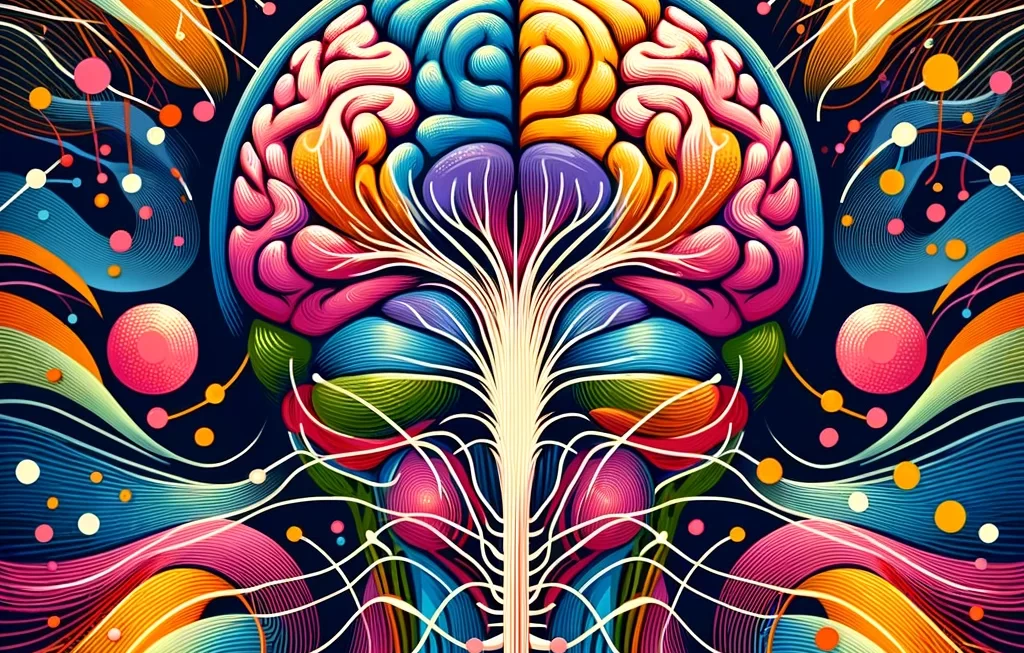Welcome to a fascinating journey through the wonders of the human nervous system, the command center behind every thought, action, and sensation you experience. Designed for those dipping their toes into this intriguing topic for the first time, our exploration will unravel the mysteries of the central nervous system (CNS), delve into the brain’s intricate structures and their functions, highlight the revolutionary neuroimaging techniques, and shed light on the spinal cord’s pivotal role in reflex actions. Let’s embark on this enlightening voyage with curiosity and eagerness to understand the marvels that make us who we are.
The Central Nervous System: The Body’s Master Controller
At the heart of our nervous system lies the central nervous system, a sophisticated network consisting of the brain and spinal cord. It’s the command center that oversees and coordinates all bodily activities, from deciphering sensory information to orchestrating movements.
- Brain: The brain is the crown jewel of our body, responsible for cognition, emotions, memory, and decision-making. It’s a complex organ, protected by the skull, where billions of neurons communicate through electrical and chemical signals.
- Spinal Cord: A vital conduit that connects the brain with the rest of the body, the spinal cord plays a critical role in transmitting messages back and forth, enabling our brain to interpret and respond to various stimuli.
Brain Structures and Their Functions: A Tour Inside the Human Mind
Our brain is a marvel of nature, composed of various structures, each with its unique role. Let’s explore some of these key areas:
- Cerebrum: The largest part, responsible for higher cognitive functions like thinking, learning, and emotional regulation.
- Cerebellum: Often referred to as the “little brain,” it’s crucial for balance, coordination, and fine motor skills.
- Brainstem: The brain’s relay center, controlling essential life-sustaining functions such as breathing, heart rate, and sleep cycles.
Neuroimaging Techniques: Peering into the Brain’s Mysteries
Neuroimaging has revolutionized our understanding of the brain, offering a window into its intricate workings. Techniques like MRI (Magnetic Resonance Imaging) and CT scans (Computed Tomography) provide detailed images of the brain’s structure, while fMRI (Functional MRI) and PET scans (Positron Emission Tomography) reveal the brain’s active regions during various tasks.
The Spinal Cord and Its Role in Reflexes: The Body’s Quick Response System
The spinal cord is not just a messenger; it’s also pivotal in reflex actions—rapid, automatic responses to stimuli, bypassing the brain’s conscious control. For example, the quick withdrawal of a hand from a hot surface is a reflex action mediated by the spinal cord, showcasing the body’s incredible ability to protect itself from harm.
Our nervous system is a testament to the complexity and marvel of human biology. From the intricate workings of the brain to the spinal cord’s swift reflexes, each component plays a crucial role in shaping our interactions with the world. As we’ve journeyed through the central nervous system, brain structures, neuroimaging techniques, and the spinal cord’s reflex actions, it’s clear that understanding these elements can enrich our appreciation for the human body’s capabilities and resilience.
FAQs
- What is the nervous system?
- The nervous system is a complex network of nerves and cells that carry messages to and from the brain and spinal cord to various parts of the body.
- How do neuroimaging techniques work?
- Neuroimaging techniques, such as MRI and fMRI, use powerful magnets and radio waves to create detailed images of the brain’s structure and function.
- Can the brain heal itself after injury?
- The brain has a limited ability to heal itself, known as neuroplasticity, where it reorganizes and forms new connections. However, the extent of recovery varies.
Further References
- Neuroscience for Kids: A fantastic resource for beginners wanting to delve deeper into the workings of the nervous system.
- BrainFacts.org: Offers comprehensive information on brain anatomy, function, and neuroimaging techniques.
- The Brain from Top to Bottom: An interactive website exploring various brain functions and structures.




